The 16 Myers-Briggs® Personality Types Dating Their Opposite Type
One of the questions I’m asked a lot as an MBTI® practitioner is what the best personality type matches are in relationships. While I think any type can excel in a relationship with any other type, I’m frequently coming across couples made up of opposite personality types. It’s like we’re all looking for a certain yin to our yang, someone to pick up where we drop off. As if we’ve all made a silent agreement to find someone who excels where we stumble, just to keep the universe balanced. Today I decided to put a humorous twist on the “opposites attract” pairings and write an article that will hopefully make you smile, but also give you some insight as well. Let’s get started!
Want to find out what your personality type really is? Take our in-depth personality questionnaire here. Or you can take the official MBTI® here.

The Myers-Briggs® Personality Types Dating Their Opposites
INFP and ESTJ: The Dreamer and The Captain
The INFP and ESTJ relationship is like a quirky indie movie that somehow landed a Hollywood budget. The INFP, our dreamy, idealistic protagonist, lives in a world of possibilities and what-ifs, while the ESTJ, the captain, stands firmly in reality, armed with schedules and productivity hacks.
When the INFP forgets to eat because they’re busy pondering the meaning of existence, the ESTJ is there with a sandwich, a multi-vitamin, and a gentle reminder that philosophy won’t pay the bills. The ESTJ thrives on structure, and the INFP thrives on an understanding of the human experience.
Imagine the scene: The INFP is curled up on the couch, engrossed in a philosophical novel, lost in a daydream about a utopian society. Suddenly, reality descends in the form of the ESTJ, armed with a vacuum cleaner, and a to-do list that scrolls like a CVS receipt. “It’s chore day,” the ESTJ announces, shattering the INFP’s daydream bubble. The INFP blinks, slowly returning from their mental travels, “But I was just about to write a novel about humanity overcoming AI…” “And I’m about to overcome the pile of laundry that’s taller than you,” the ESTJ retorts with a smile.
On the other hand, our INFP protagonist does have some tricks up their sleeve to help the ESTJ. Imagine this: the ESTJ, wired from a long day of work, is struggling to switch off their well-oiled, efficiency-driven machine of a brain. They’re pacing around the room, ticking off imaginary tasks, while the moon is high in the sky. The INFP, noticing their partner’s restless energy, slides a mug of chamomile tea across the table. “I know just what you need,” the INFP says, pulling out an obscure vinyl record from their eclectic collection. As the soothing sound of a Tibetan singing bowl fills the room, the ESTJ raises an eyebrow – a simple gesture that says, “I don’t understand, but I’ll give it a shot.” Hours later, the ESTJ is found, for the first time in years, sleeping peacefully before midnight, while the INFP, grinning triumphantly, stays up to finish reading the dystopian novel that’s been keeping them awake all night.
These two can often find a strange harmony together. The ESTJ helps the INFP turn their dreams into actionable plans, while the INFP reminds the ESTJ that life isn’t just about ticking off to-do lists; it’s about experiencing the beauty and mystery of the world and the soul. It’s a balance between the ground and the sky, between the practical and the ethereal. So, while it may seem like these two are as compatible as a cat and a toaster, they somehow make it work.
Getting More Serious:
The INFP’s strength lies in their rich inner world, emotional depth, and their innate ability to understand the human experience. On the other hand, the ESTJ is a take-charge person, someone who excels in creating structure and bringing things into order. Their practical nature can bring a sense of balance to the idealistic world of the INFP.
Pros: Each type offers something the other lacks. Where the INFP is empathetic and imaginative, the ESTJ is realistic and task-focused. This complimentary dynamic could lead to a well-rounded and balanced relationship, with each party learning and growing through their interaction.
Cons: Their polar opposite nature can also lead to misunderstandings. The ESTJ’s blunt communication could sometimes feel too brusque for the sensitive INFP. In turn, the INFP’s emotional intensity might be overwhelming for the more pragmatic ESTJ.
Find out more about INFPs: How INFPs Say “I Love You” and ESTJs: 24 Signs That You’re an ESTJ Personality Type
ISFP and ENTJ: The Virtuoso and The Director
The ISFP and ENTJ relationship is akin to a fever dream you’d have after watching too many episodes of a wacky sitcom. On one side, we have our ISFP, the virtuoso, who’s always caught up in the sensory details of the world and the beauty of the moment. Meanwhile, the ENTJ, our Director, is ten steps ahead, strategizing and orchestrating their next big move.
Picture this, the ENTJ has plotted an elaborate hiking adventure for the weekend. Each pitstop has been carefully planned and they’ve packed a journal to keep track of business ideas that are sparked by the rugged landscape. They are all set to conquer the wilderness with the precision of a military operation. But our ISFP, the virtuoso, has other ideas. They see beauty in the wildflowers on the trailside, the interestingly shaped pebbles, the chirping of the birds in the trees, and yes, even that weird-looking amphibian. The ENTJ, struggling to keep the ISFP on schedule, finally gives in, and a lesson in ‘stopping to smell the roses’ is begrudgingly learnt.
Next, it’s a lazy Sunday afternoon and the ISFP, in tune with their emotional and sensitive nature, decides that it’s high time the ENTJ indulged in some emotional exploration. Armed with a well-worn copy of Jung’s “Man and His Symbols”, an assortment of herbal teas, and a soothing playlist, the ISFP declares it’s time for a heart-to-heart talk about the ENTJ’s inner world. The ENTJ, ever the pragmatist, skeptically agrees, but not without first trying to structure the endeavor. They swiftly produce a notepad and pen, creating headings like “Emotional Inventory”, “Feelings Audit” and “Timetable for Tears”. The ISFP, chuckling softly, gently pulls the notepad away. “It’s not a project, it’s a process,” they reassure, as the ENTJ looks on in terror.
Now, let’s imagine the ISFP has a dream of creating a beautiful, nature-inspired art exhibition, but can’t figure out how to turn this dream into reality. Cue the ENTJ. Armed with a whiteboard and an arsenal of colored markers, the ENTJ springs into action. Within minutes, the whiteboard is filled with a flowchart, complete with deadlines, budgets, and a step-by-step implementation strategy. The ISFP looks on, bewildered, as their dream is dissected into color-coded bullet points. “But… but… where’s the ‘feeling the canvas’, ‘embracing the unpredictability’, and ‘letting the brush guide me’ parts?”, the ISFP protests weakly. The ENTJ, barely looking up from their meticulously crafted plan, hands the ISFP a marker. “Okay, we can incorporate that. Let’s call it… ‘Inspirational Time Block’,” they offer. The ISFP, reluctantly, starts to see their dream taking a structured form. And while they may not admit it aloud, they’re secretly grateful for the ENTJ’s practicality that is turning their dream into a tangible, achievable goal.
Their adventures together continue in a similar vein. The ENTJ, in their valiant efforts to organize a smooth path through life, inadvertently learns to appreciate the spontaneous beauty of the world around them, thanks to the ISFP. The ISFP, on the other hand, learns the value of a well-executed plan and discovers that there is indeed a certain satisfaction in ticking off tasks from a to-do list.
Getting More Serious:
The ISFP’s strength lies in their emotional depth, their affinity for details, and appreciation of the present moment. The ENTJ, a natural-born leader, is skilled at strategizing and executing plans. Together, they create an interesting dynamic where reality meets vision.
Pros: While the ENTJ helps the ISFP to plan and take action, the ISFP teaches the ENTJ to slow down and savor the simple pleasures in life. This balance could make their relationship fruitful and fun. At the same time, the ISFP helps the ENTJ to discover what really matters to them personally, while the ENTJ helps the ISFP to embrace the more analytical, no-nonsense side of themselves.
Cons: They may occasionally encounter misunderstandings due to their different communication styles and priorities. The ENTJ’s focus on efficiency and results might seem harsh to the sensitive ISFP. Conversely, the ISFP’s go-with-the-flow attitude might come across as undisciplined to the practical ENTJ.
Discover more about these two personality types!
The ISFP: How ISFPs Say “I Love You”
The ENTJ: How ENTJs Say “I Love You”
INTP and ESFJ: The Thinker and The Provider
In the world of Myers-Briggs® personalities, the pairing of an INTP and an ESFJ is chaotic but somehow adorable at the same time. Let’s imagine a woman named Amy, an INTP. She lives in a world of logic and ideas that would give Einstein a run for his money. She’s known to skip sleep to solve a theorem that’s been bothering her, or forget to eat because she’s lost in thought about the mysteries of the universe. Now, Ben, the ESFJ, is the friendly host at every party. He’s the guy who remembers your birthday, your mom’s birthday, and even your neighbor’s bearded dragon’s birthday. He feeds off social interaction like a plant in sunlight, and his calendar is booked with social events till 2050.
So, when Amy and Ben started dating, their friends were as shocked as if they had announced plans to colonize Mars. But it wasn’t all chaos and confusion. You see, Amy, the logic-loving INTP, found Ben’s flurry of social activity fascinating, like watching a mysterious alien species. On the other hand, Ben, the social butterfly, found Amy’s deep world of thought intriguing, like discovering a secret treasure chest.
Game Night:
Let’s take a look at the time Ben decided to host a game night. Ben, the social butterfly that he is, was thrilled at the idea of Amy meeting his friends. Amy, on the other hand, would have preferred to debate Kant’s critique of pure reason with a snail.
Committed to making it work, Amy agreed, her mind automatically categorizing it as a noble sacrifice for love. Then came the night of the game. The guests arrived, fueled by dreams of Pictionary and light banter. Amy, however, had other plans. She unveiled the game she’d brought: an intergalactic strategy manifesto disguised as a board game, Stellaris. The room went silent, but everyone had hopes that this formidable-looking space-quest would bring people together in light humor and life stories shared. Perhaps it was like “Cards Against Humanity” but with a sci-fi theme!
As Amy pulled out the rulebook, that looked more like a Russian novel, the guests realized the true extent of their mistake. They politely smiled as she delved into the intricate details of trade routes and alliances. Ben, with a nervous laugh, tried to lighten the mood by mentioning that UNO was a simpler option, but Amy wasn’t having it. The game night turned into an intense diplomatic conference of galactic proportions, with Ben frantically trying to rally the guests into interstellar alliances.
After two hours of gameplay, with Amy as the undisputed winner and everyone else questioning their life choices, Ben finally called it a night, apologetically gifting everyone with a plate of cookies. As they cleaned up the game, Amy turned to Ben and asked innocently if he wanted to try the game again sometime. Ben, with a strained smile, replied, “Maybe on our 10-year anniversary.”
But amid the chaos, their love story persisted. Sure, they stumbled, they bumbled, but they kept on, each hilarious disaster serving as yet another testament to their peculiar brand of love. After all, as Amy once said, “It’s not about perfection, Ben. It’s about the entropy!” Still figuring out what she meant, Ben replied, “As long as it involves you, Amy, I’m in.”
Getting More Serious:
Of course the above is an exaggerated reflection of the INTP and ESFJ personality types. But if we peel back the layers of humor, we find a partnership between an INTP and an ESFJ that can be deeply fulfilling.
The INTP, with their analytical mind and innovative thinking, brings a wealth of intellectual stimulation to the relationship, while the ESFJ, with their natural warmth and social adaptability, creates a nurturing environment where the INTP can explore a more sensitive side of themselves.
Pros: This partnership can be rich in balance and discovery. The INTP can get out of their shell and explore the social realm and their own feelings with the ESFJ, while the ESFJ can explore more innovative approaches to life and have freedom to express their more controversial thoughts and opinions with the INTP.
Cons: Differences, while often beneficial, can also lead to misunderstandings. The ESFJ might feel neglected by the INTP’s need for personal space, while the INTP might feel overwhelmed by the ESFJ’s social nature and more emotional intensity. The key is to understand and respect each other’s needs and boundaries.
Find out more about INTPs and ESFJs: 24 Signs That You’re an INTP, the Prodigy Personality Type
24 Signs That You’re an ESFJ, the Defender Personality Type
The ISTP and the ENFJ
Meet our ISTP – a rugged, individualistic soul (we’ll call them Jason). This self-proclaimed lone wolf spends their weekends either fixing an old motorbike or scaling treacherous mountain trails. They have an uncanny ability to build a working toaster from a pile of scrap metal – all while blindfolded. The ISTP’s ideal Saturday night comprises of a quiet room, a classic rock playlist, and the exhilarating challenge of assembling a DIY bookshelf.
Enter the ENFJ, Sydney– the charismatic hero with a heart of gold. This visionary can be found giving passionate speeches about unity and compassion at every opportunity, even at mundane gatherings like family dinners or high school reunions. The ENFJ, with their infectious optimism and unparalleled ability to bring people together, can turn a grocery store opening into a soul-stirring event.
Now picture this – our ISTP is in the middle of assembling an IKEA chair, with parts scattered all around, lost in a world of nuts and bolts. In walks the ENFJ, fired up after watching Braveheart for the 17th time, ready to rally the troops (or in this case, furniture parts) towards victory. The ENFJ passionately delivers a speech to the ISTP about unity and the power of doing what’s right even when you know you’ll have to make huge sacrifices. The ISTP, on the other hand, is left wondering if their wrench is ready for its moment of inspiration.
Imagine the ENFJ trying to infuse a sense of grandeur into a simple camping trip. While the ISTP is ready to dive into the raw, unadulterated challenge of surviving in the wild, the ENFJ is there, gazing into the forest, singing “Born Free” and discussing the meaning of life.
But as different as they may seem, the ISTP and ENFJ can actually complement each other well. The ISTP brings a grounding presence to the ENFJ’s visionary outlook, while the ENFJ encourages the ISTP to explore their emotional side and consider the long-term ramifications of their decisions. Together, they can create a dynamic balance of adventure and introspection.
Getting More Serious:
Once we move past the comedic spectacle, there exists a beautiful synergy between the ISTP and the ENFJ. The ISTP, with their pragmatic approach and unmatched problem-solving abilities, can help the ENFJ achieve their visionary goals in practical ways. In contrast, the ENFJ, with their charismatic charm and emotional intelligence, can teach the ISTP the power of communication and the magic of emotional connection.
Pros: There is potential for a unique balance here. The ENFJ can help the ISTP to open up and connect with others, while the ISTP can ground the ENFJ’s lofty dreams in practical reality and refine the logic of their intuitive ideas.
Cons: The ISTP’s lone wolf tendencies can clash with the ENFJ’s desire for unity and togetherness. Also, the ENFJ’s need for emotional connection may be too much for the pragmatic, fact-oriented ISTP. The key, as always, is understanding, acceptance, and a shared Netflix subscription.
Discover more about ISTPs and ENFJs:
7 Ways That ENFJs Make an Impact
The INFJ and the ESTP
Picture the INFJ – a mystical creature, attired in flowy robes, their black hair windswept, as if they’ve just stepped out of one of their philosophical daydreams. Candles flicker in the corners of their minimalist living space (electric lights are too overstimulating), casting an ethereal glow on their thoughtful face. They are always lost in thought, pondering the mysteries of the universe or dissecting the latest psychology book they’ve read. Their ideal date is a deep conversation over herbal tea, connecting on a soulful level as they discuss theories about the interconnectedness of all things.
Now, enter the ESTP – all energy and charm, a whirlwind of spontaneous fun. They’re the type to do a backflip off a park bench on their way to the local market. Just because they can. Their idea of a great night involves a vigorous round of the latest video game with their buddies, surrounded by the sounds of electronic warfare and laughter. In the quiet moments, they retreat to their workshop to turn a pile of timber into a fully-functioning coffee table in record time.
The ESTP, with a twinkle in their eye and a cocky grin, sidles up to the INFJ. “Hey, ever considered that you and I are like electrons and protons? We’ve got some serious chemistry,” they say, punctuating their words with a confident wink. The INFJ, in return, offers a soft smile, their eyes gleaming with amusement. “That’s a fascinating perspective,” they reply, “but I’d like to propose a different analogy. You see, we’re more like a quasar and a black hole. You exude all this vibrant energy, radiating in every direction, while I absorb and reflect upon it, just like a black hole consuming the light of a quasar.” The ESTP blinks, their confident grin faltering for a moment, as they struggle to fully comprehend the metaphorical depth of the INFJ’s counter-flirtation. They scratch their head, grin sheepishly, and respond with a playful, “So… that’s a good thing, right?”
The INFJ pulls out a tattered copy of Freud’s theory on dreams; the ESTP shows off his latest invention, a wooden contraption that makes popcorn while you play video games. They communicate in different languages, and yet, there’s an underlying intrigue they find in each other. It’s a comical clash of temperaments – the quiet, contemplative INFJ and the lively, action-oriented ESTP. It’s a chaotic, hilarious spectacle that you can’t help but watch.
Getting More Serious:
While this story of INFJ and ESTP couple may induce laughter, reality paints a slightly different, albeit equally fascinating, picture. The INFJ, the visionary and idealist, brings a depth of insight and an intuitive understanding of people and ideas to the relationship. The ESTP, on the other hand, offers a pragmatic view of the world, grounded in sensory experience and practical cleverness.
Pros: This pairing can offer an enriching exchange of perspectives. The ESTP can help the INFJ to become more present and engaged with the world around them, while the INFJ can provide the ESTP with a deeper perspective on life, encouraging them to slow down and reflect on their experiences.
Cons: The contrast in their approach to life can also cause tension. The INFJ may perceive the ESTP as being too impulsive and superficial, while the ESTP might find the INFJ overly serious and obsessed with abstract ideas that are “impractical.” Nevertheless, with patience, understanding, and effective communication, they can learn to appreciate their differences, viewing them as complementary rather than conflicting.
Find out more about INFJs and ESTPs:
The Flirting Style of the ESTP Personality Type
The ISFJ and the ENTP
Imagine a serene garden filled with blooming flowers, a quiet sanctuary where each petal is tenderly cared for. In this garden is the ISFJ, meticulously tending to every plant, with a worn gardening hat and dirt-streaked cheeks. A creature of habit, the ISFJ thrives on routines and the comforting predictability of their familiar surroundings. Their ideal date would be a quiet evening at home, ideally with a home-cooked meal, a cozy fire, and a classic movie they’ve seen a dozen times over.
Suddenly, their wild ENTP partner bursts into the garden, shattering the quiet serenity with a cacophony of interesting ideas, future possibilities, and a dozen unfinished projects. With a device in one hand and a coffee cup in the other, the ENTP is the embodiment of chaos in motion. Their ideal date involves a STEM workshop, exploring new technologies, or enjoying a midnight debate about whether or not we’re living in a simulation.
The ENTP, in a fit of enthusiasm, accidentally tramples over the roses while passionately explaining their latest theory on time travel. The ISFJ, horrified, rushes to the rescue of their precious flowers, all while listening politely to the ENTP’s exuberant ramblings. The ENTP, in turn, is genuinely surprised at the ISFJ’s dedication to their garden, promising to help fix it – an offer which, more often than not, ends in more chaos.
The Journey Continues…
On a different sunny afternoon, as the ISFJ is tending to their sunflowers, they receive another call from their friend, who has a knack for taking advantage of their good nature. “Hey, can you help me move this weekend? And while you’re at it, could you bake some of your famous cupcakes for my party?”
At that moment, the ENTP stumbles into the garden, nearly stepping on the azaleas while engrossed in a book about quantum physics. Overhearing the conversation, they decide to intervene. With a grin, they ask for the phone, and the ISFJ reluctantly but curiously gives it to them. With the receiver to their ear, they ask, “You know, there’s this thing called quid pro quo. Ever heard of it?” The ISFJ looks on, both amused and exasperated, while the ENTP proceeds to negotiate a more balanced exchange of favors. The ENTP hates seeing the ISFJ’s warm, empathetic nature taken advantage of, and the ISFJ appreciates the ENTP’s unusual ability to solve problems in the most unexpected ways.
Getting More Serious:
Despite all the potential chaos, the ISFJ and ENTP duo can form a truly rewarding partnership. The ENTP’s energy and out-of-the-box thinking can inspire the ISFJ to break out of their comfort zone and embrace new possibilities, while the ISFJ’s sense of duty, reliability, and warmth can offer a grounding force in the ENTP’s chaotic world.
Pros: This pairing can be a wonderful blend of stability and innovation. The ENTP can nudge the ISFJ towards new experiences and challenges, while the ISFJ can offer the ENTP a safe haven of peace and consistency.
Cons: Potential conflicts can arise from their starkly different lifestyle preferences. The ISFJ might find the ENTP’s unpredictable nature stressful, while the ENTP might feel stifled by the ISFJ’s love for routine and order. However, if both parties are willing to embrace their differences and learn from each other, they can turn these potential weaknesses into strengths, creating a partnership that’s as balanced as it is entertaining.
Curious about ISFJs and ENTPs? Find out more!
24 Signs That You’re an ISFJ, the Protector Personality Type
10 Things You Should Never Say to an ENTP
The INTJ and the ESFP
Meet the INTJ – the Nikola Tesla of our time – encapsulated in a bubble of complex thoughts and revolutionary ideas. Their facial expression often mirrors that of someone trying to solve the mysteries of the universe. Picture them huddled in their private study, surrounded by an assortment of books and blueprints, as they delve into the latest problem plaguing mankind. Lighting strikes outside their window but they hardly notice, too engrossed in a trail of thoughts leading to their next big discovery. Their ideal date? A quiet evening in, with nothing but the sound of the rain gently tapping against the windowpane, coupled with a captivating discussion about advanced string theory or a breakthrough in sustainable energy research.
Enter the ESFP – a living, breathing embodiment of carpe diem. They’re passionate, expressive, and enthusiastic – a veritable tornado of actions and ideas. Their motto is ‘Why walk when you can dance and backflip?’ They are the personification of the phrase “live life to the fullest”, leaping headfirst into any cause they believe in, with an energy that can only be described as contagious. They’re the life of every party, the first to hit the dance floor, and the last to leave. Their ideal date? A fun-filled day at a music festival, dancing to the beat, chatting with strangers, and maybe even joining the musicians on stage for an impromptu performance.
Now, picture these two on a date. The INTJ, with their usual serious expression, offers to share some intriguing insights from their latest research on harnessing the power of black holes for sustainable energy production. The ESFP, with a twinkle in their eye, counters with a passionate speech about the charity concert they’re organizing to raise funds for the local animal shelter.
Meanwhile, the INTJ is trying to establish a connection between the harmonics of the music and the mathematical model of string theory. On the other hand, the ESFP is already planning the after-party, suggesting a moonlit dance on the rooftop to celebrate their successful date. The INTJ is perplexed but intrigued, the ESFP is amused but fascinated.
It’s an unusual mix – the theoretical physicist and the effervescent party planner – like trying to pair a philosophical discourse with a rock concert. Yet, there’s an underlying allure. The result? An odd, delightful mishmash of deep thought and lively action, creating a spectacle that’s as hilarious as it is enchanting. The INTJ brings a grounding influence to the ESFP’s whirlwind of energy, while the ESFP adds a splash of vibrant color to the INTJ’s grey world of theories and thoughts. It’s a comedy of contradictions – a laugh-out-loud spectacle of opposites attracting!
Getting More Serious:
The above examples play on some stereotypes, but this relationship can offer a lot of growth and discovery. The INTJ, ever the strategist and planner, brings a level of analytical acuity and forward-thinking to the partnership. The ESFP, conversely, introduces a dynamic, live-in-the-moment approach, replete with sensory experiences and emotional connections.
Pros: The pairing of an INTJ and an ESFP can lead to a dynamic and surprising blend of experiences. The ESFP can encourage the INTJ to step out of their cerebral world and appreciate the richness of the present moment. The INTJ, in return, can provide the ESFP with a long-term perspective, helping them troubleshoot and bring strategy and structure to their dreams.
Cons: This union isn’t without its challenges. The INTJ might view the ESFP’s impromptu nature as chaotic and lacking in depth, while the ESFP could see the INTJ’s constant planning and analysis as rigid and unexciting. However, with mutual respect and a willingness to adapt, these two can offer each other an unusual but enriching blend of life experiences, making their relationship a fascinating journey of continual exploration and discovery.
Want to know more about INTJs and ESFPs?
24 Signs That You’re an INTJ, the Strategist Personality Type
7 Ways That ESFPs Make an Impact
The ISTJ and the ENFP
Meet the ISTJ, the epitome of dutifulness, a champion of organization, with a love for to-do lists that rivals a squirrel’s passion for acorns. Their day is neatly catalogued in a color-coded planner, each task marked with a precise timing, down to the minute. There’s something truly poetic about watching them sip their perfectly brewed, 180-degree Fahrenheit coffee at 8:02 AM sharp – the exact time allocated for coffee consumption.
Enter the ENFP, the personification of spontaneity, the master of impulse. They dance through life on the rhythm of their wild imagination, following the path less beaten, and often creating their own. Their morning routine? What’s that? It’s more like a “morning surprise”, where each day brings a new, unplanned adventure. Watching them decide whether to paint, write a song, or go for a random road trip at 8:02 AM is like watching a whirlwind of creativity and chaos.
Now, imagine these two on an adventure. The ISTJ, armed with their travel itinerary, printed tickets, and a checklist of “essential items for a well-organized trip.” They’ve planned for everything, right down to the best time to visit each landmark. The ENFP, on the other hand, shows up with a backpack full of art supplies, a book about the Enneagram, and a vague suggestion of maybe visiting “that interesting-looking mountain, or the quirky café down the lane, or hey, how about that mystery tour the locals are raving about?” The ISTJ’s perfectly planned schedule teeters precariously on the edge of chaos.
The ISTJ, initially flustered by the lack of a concrete plan, is soon swept off their feet by the ENFP’s infectious energy. The ISTJ finds themselves painting a landscape at sunrise (an unscheduled activity at an ungodly hour!), making unplanned pit stops at roadside attractions (that aren’t even on the itinerary!), and participating in an impromptu ukulele concert with the locals (Where did the ukulele even come from?!).
And lo and behold, amidst all the unplanned chaos, the ISTJ discovers a new side to life. They realize that not every minute needs to be scheduled, that unplanned detours often lead to the most memorable adventures, and that there’s an unparalleled thrill in simply going with the flow. The ENFP, with their wild, unadulterated spontaneity, manages to show the ISTJ that sticking to the book is not always the only way to enjoy the story.
On the other hand, the ISTJ, with their exceptional organizational skills, helps the ENFP channel their vibrant dreams into achievable goals. For instance, when the ENFP announces, on a whim, their plan to construct a treehouse as a sanctuary for local birds, the ISTJ steps in. They help the ENFP break down this grand ambition into manageable milestones – procuring materials, securing permissions, constructing the treehouse, and promoting the sanctuary. With the ISTJ’s structured approach, the ENFP’s dream gradually transforms from a fanciful idea into a tangible reality, demonstrating how this unlikely duo can leverage their individual strengths to bring about extraordinary outcomes.
Getting More Serious:
Behind the comedy of the ISTJ and ENFP relationship is a deep potential for growth and synergy. The ISTJ’s penchant for order and diligence can create a solid foundation for the relationship, where the ENFP’s spontaneity and creativity can add an element of surprise and excitement.
The ISTJ’s strength lies in their practicality, their ability to plan and their dedication to duty. They can provide structure and stability to the ENFP’s spirited and imaginative world. The ENFP, on the other hand, brings a sense of wonder, creativity and emotional depth that can help bring the ISTJ out of their shell and explore new perspectives on life.
Pros: The ISTJ-ENFP relationship can be a harmonious blend of stability and spontaneity. The ISTJ’s love for plans and order can be a grounding force for the ENFP’s whirlwind of creativity and spontaneity, while the ENFP’s imaginative nature can add a dash of excitement and novelty to the ISTJ’s structured world.
Cons: The potential for conflict lies in their vastly different approaches to life. The ISTJ’s love for routine may clash with the ENFP’s need for spontaneity. Similarly, the ENFP’s emotional openness might be overwhelming to the reserved ISTJ, who values privacy and tends to keep their emotions to themselves.
Find out more about ISTJs and ENFPs:
24 Signs That You’re an ENFP, The Visionary Personality Type
5 Strengths of the ISTJ Personality Type
What Are Your Thoughts?
Now, it’s your turn to join the conversation! Have you experienced an opposite type relationship – whether it’s a romantic relationship, a friendship, or even a work relationship? How have you navigated the challenges and celebrated the strengths of this unique pairing? Share your thoughts, experiences, and any insights in the comments below!
Explore even more about your personality type in our eBooks, Discovering You: Unlocking the Power of Personality Type, The INFJ – Understanding the Mystic, The INTJ – Understanding the Strategist, and The INFP – Understanding the Dreamer. You can also connect with me via Facebook, Instagram, or Twitter!


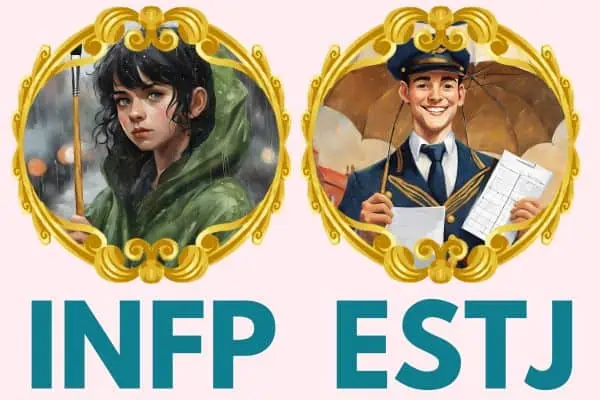
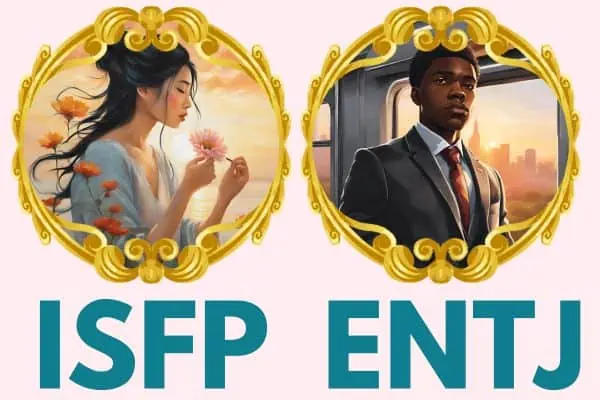
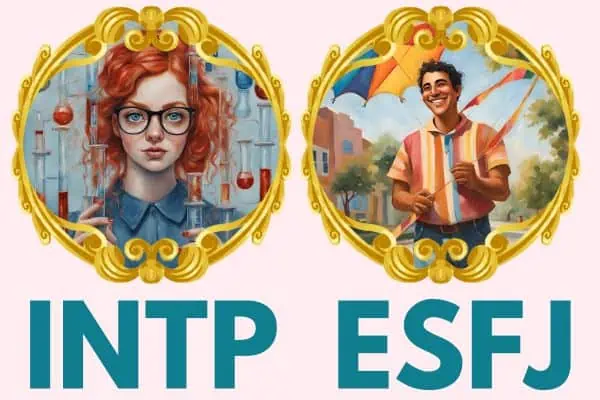
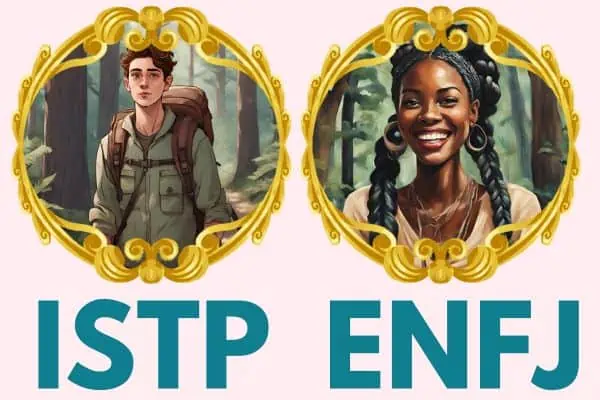
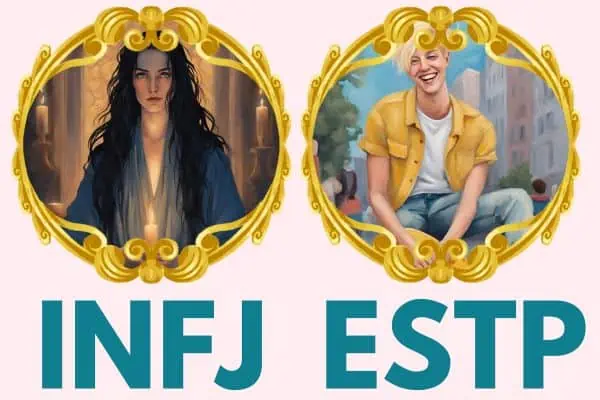
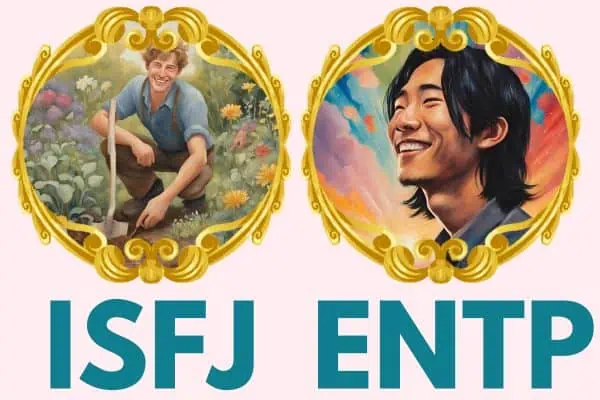
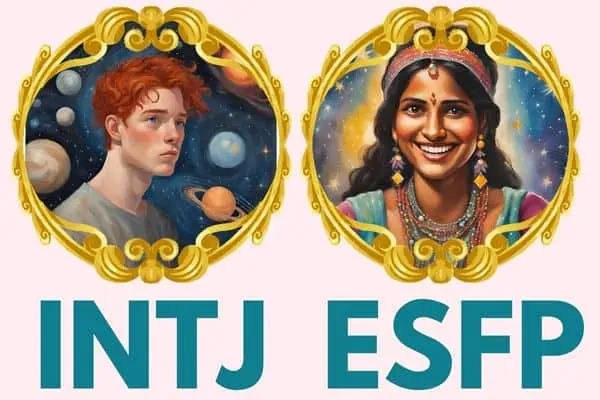
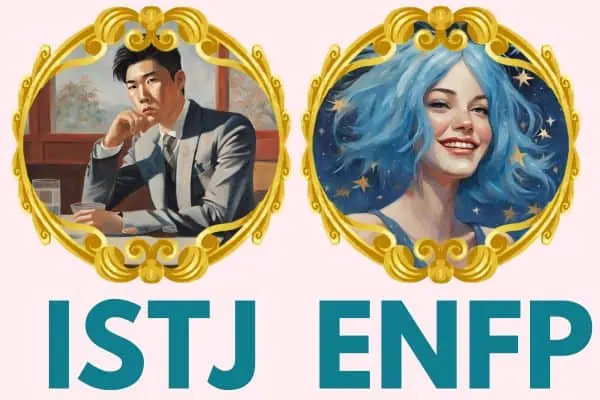
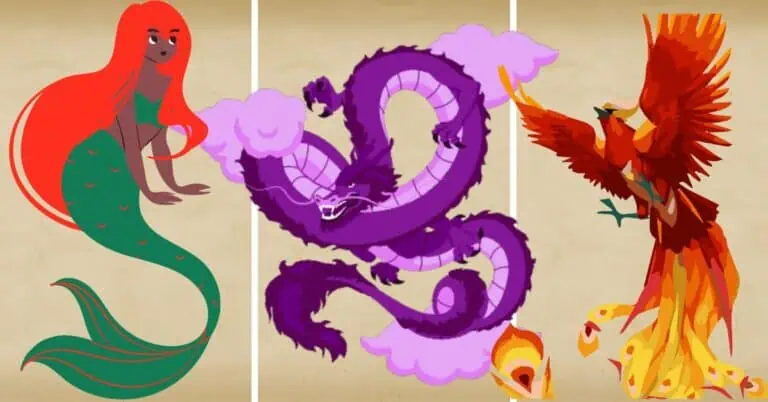
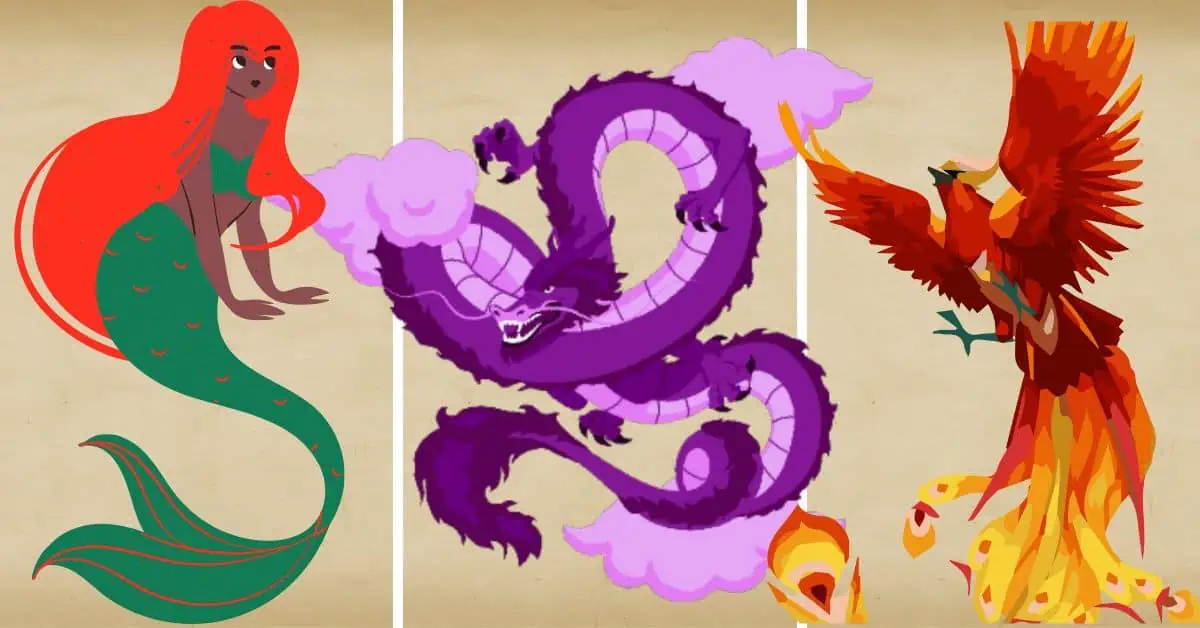







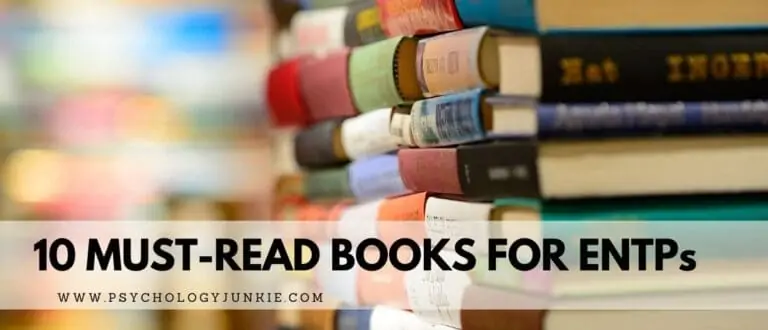
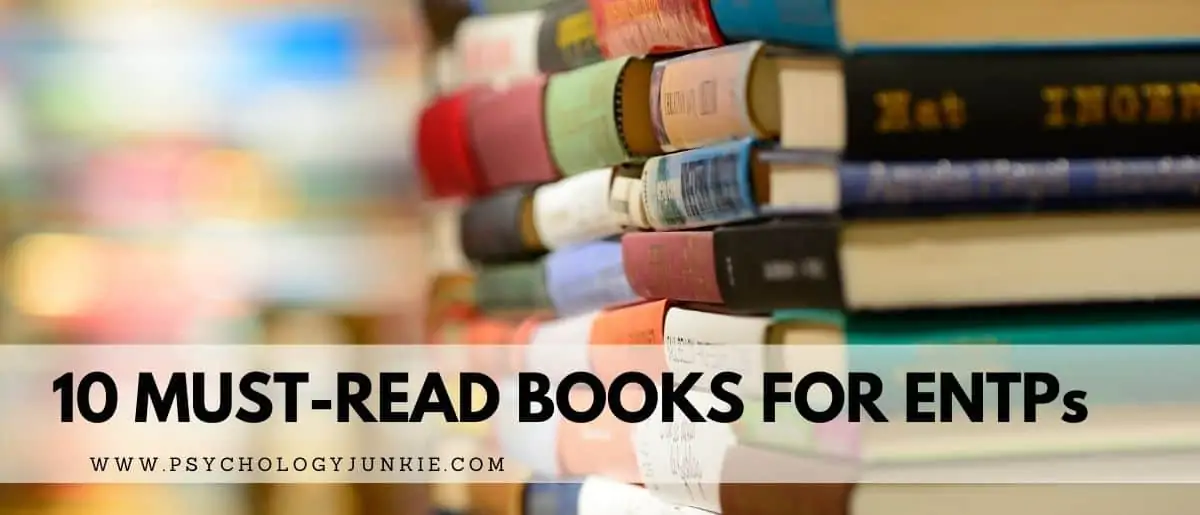
I got so excited about this article and to read all about my relationship until in my moment of stupidity I got to my husband’s personality type and realized oh wait, we aren’t complete opposites as we are both introverts. I am an INFJ. Been happily married to an ISTP for 15 years.
What is Susan Storm’s mbti?
I have INTJ preferences 🙂
Again relating INTPs to the space thing. I am a female INTP and all other INTPs i know don’t fit this. Yet every single article is oh they like space. No. They like complexity, synchronicity and patterns.
My mom is an estj and I’m an infp. It is quite the fun dynamic.